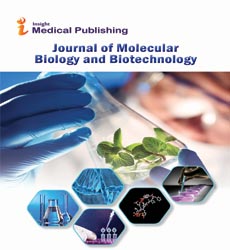Biochemical Differences in Human Breast Milk Contents According to Infant's Gender
Faculty of Medicine, Institute of Endemic Diseases, University of Khartoum, Sudan
- *Corresponding Author:
- Mutaz Amin
Faculty of Medicine
Al-Neelain University, Sudan
Tel: +249911414471
E-mail: mtz88@hotmail.co.uk
Received date: May 17, 2018; Accepted date: May 25, 2018; Published date: June 03, 2018
Citation: Dafaallah S, Amin M, Abbas T, Mohammed A, Kabbara E (2018) Biochemical Differences in Human Breast Milk Contents According to Infant’s Gender. J Mol Biol Biotech. Vol.3 No.1:2
Abstract
Human milk composition is dynamic, and varies between mothers in the same and different populations. Breast milk content was also found to vary diurnally, over a feeding and in some species according to the gender of the breast feeding infant. This study aimed to determine if there are any quantitative differences in the biochemical constituents of breast milk according to the gender of the breast feeding infant. Forty eight breast feeding mothers participated in the study, 24 were breast feeding male infants and 24 were breast feeding female infants. Five ml of breast milk was collected from each mother then analyzed for lipid contents, carbohydrates, proteins and calcium. Carbohydrates, amino acids and calcium concentration were measured using colorimetric test of absorbance. There were significant differences in the concentration of lipids and calcium in breast milk of male and female breast feeding mothers (P-value<0.001 and 0.02, respectively). Our study indicates that breast milk is more dynamic than previously thought and concentration of breast milk contents should not be taken as fixed. This can lead to developing personalized formula feeding specific to the baby’s gender and age and matches his/her growth needs.
Keywords
Breast milk; Infant; Gender; Nutrients
Introduction
Breast milk is the main source of energy and nutrients for the growing infant [1]. It provides all the needed requirements and protects against infections and diseases in both the infant and the mother [2]. Human breast milk is composed mainly of water, carbohydrates, lipids, proteins, calcium and other micronutrients [3]. These nutrients supply the developing infant with sufficient energy (from lipids and carbohydrates) to fuel his/her rapid growth and proper calcium and minerals for the developing bones [4].
Human milk composition is dynamic, and varies between mothers in the same and different populations [4]. Breast milk content was also found to vary diurnally, over a feeding and in some species according to the gender of the breast feeding infant [5]. However, studies in this regard are still rare and the physiology behind these dynamics remains to be poorly understood.
This study aimed to determine if there are any quantitative differences in the biochemical constituents of breast milk according to the gender of the breast feeding infant.
Materials and Methods
This study was conducted in Khartoum state, Sudan. The population under study was breast feeding mothers who attended Omdurman teaching hospital in the period from October 2016 to march 2017. Forty eight breast feeding mothers participated in the study, 24 were breast feeding male infants and 24 were breast feeding female infants. All mothers were in the same age group (25-35 years) and matched in body weight and socioeconomic status.
Ethical consideration
This study was approved by the ethical committee of ministry of health in Sudan. Informed consent was obtained from each mother before participation in the study.
Laboratory investigations
Five ml of breast milk was collected from each mother then analyzed in the Biochemistry lab of the Faculty of Medicine, Al- Neelain University for lipid contents, carbohydrates, proteins and calcium. Carbohydrates, amino acids and calcium concentration were measured using colorimetric test of absorbance.
Data analysis
The data was analyzed using SPSS version 20.0.
Results
The mean concentration of lipids in the breast milk of mothers was 405.5 mg/dl and 270.9 mg/dl for male and female breast feeding infants respectively. The result was statistically significant (P-value<0.0001). The concentration of amino acids was similar in both groups (p-value=0.1), (Table 1).
Table 1 Biochemical contents of breast milk of male and female feeding breast feeding mothers.
| Male infants (24) | Female infants (24) | ||||
|---|---|---|---|---|---|
| Nutrient | Mean | SD | Mean | SD | P-value |
| Lipids (mg/dl) | 406 | 92.4 | 271 | 92 | <0.0001* |
| Amino acids | 3.1 | 1.3 | 3.5 | 1.5 | 0.1 |
| Calcium | 3.9 | 1.8 | 2.8 | 1.1 | 0.02* |
In our study, male infants received significantly higher amount of calcium from breast milk compared to female infants (p-value=0.02) (Table 1).
In both groups (male and female feeding breast feeding mothers), the breast milk contained 3+ of carbohydrates. There was no statistically significant difference between the two groups (p-value=0.4) (Figure 1).
Discussion
Human’s breast milk is very dynamic in terms of contents and its constituents vary according to many factors including time of feeding, maternal nutrition and more interestingly infant’s gender [4]. In this study, we biochemically analyzed the breast milk of 48 breast feeding mothers, half with male and half with female breast feedings infant in order to verify any differences in human breast milk content according to the infant’s gender. We found that the breast milk contains significantly higher contents of lipids and calcium if the gender breast feeding infant was a male. This result is consistent with a previous study which also found that lipids contents are higher in breast milk of mothers with male babies especially for complex lipids and polyunsaturated fatty acids [5]. However, many studies have found that lipids are the most variable of all breast milk macronutrients and their content depends on the diet of the mother [6]. Hence, more studies with larger samples are needed to verify that our results are not due to chance.
Conclusion
The result of our study is limited by small sample size and laboratory techniques but more importantly due to the lack of control of the age of the infant during the time of sampling and the diet composition of the mother, which is a significant confounding factor. However, our study still gives a clue that breast milk is more dynamic than previously thought and concentration of breast milk contents should not be taken as fixed.
The physiology behind gender based breast milk variations is still poorly understood. Gender based differences in body needs of nutrients is expected to occur only during or just before puberty due to hormonal changes between the sexes [7]. However few studies also indicated that such differences might start much earlier even during infancy [8]. If variations in breast milk constituents are proved existent and correlated with the gender of the infant, this will lead to developing personalized formula feeding specific to the baby’s gender and age and matches his/ her growth needs.
Conflict of Interest
The authors declare no conflict of interest.
Availability of Data and Materials
The datasets used and/or analyzed during the current study are available from the corresponding author on reasonable request.
Funding Source
This study was partially funded by Al-Neelain University.
References
- Martin CR, Ling P-R, Blackburn GL (2016) Review of infant feeding: Key features of breast milk and infant formula. Nutrients 8: 5.
- WHO (2017) Exclusive breastfeeding.
- Ballard O, Morrow AL (2013) Human milk composition: Nutrients and bioactive factors. Pediatr Clin North Am 60: 49-74.
- Prentice AM, Paul AA (2017) Fat and energy needs of children in developing countries. Am J Clin Nutr 72: 1253S-1265S.
- Thakkar SK, Giuffrida F, Cristina CH, De Castro CA, Mukherjee R, et al. (2013) Dynamics of human milk nutrient composition of women from Singapore with a special focus on lipids. Am J Hum Biol 25: 770-779.
- Stam J, Sauer PJ, Boehm G (2013) Can we define an infant’s need from the composition of human milk? Am J Clin Nutr 98: 521S-528S.
- Soliman A, De Sanctis V, Elalaily R (2014) Nutrition and pubertal development. Indian J Endocrinol Metab 18: S39-47.
- Schoenbaum M, Tulchinsky TH, Abed Y (2017) Gender Differences in Nutritional Status and Feeding Patterns among Infants in the Gaza Strip.
Open Access Journals
- Aquaculture & Veterinary Science
- Chemistry & Chemical Sciences
- Clinical Sciences
- Engineering
- General Science
- Genetics & Molecular Biology
- Health Care & Nursing
- Immunology & Microbiology
- Materials Science
- Mathematics & Physics
- Medical Sciences
- Neurology & Psychiatry
- Oncology & Cancer Science
- Pharmaceutical Sciences

